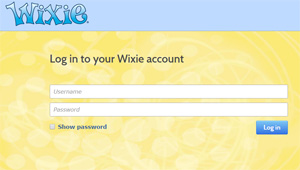
“It’s like...magic!” the second grader celebrated, as he scanned a QR code on a frog food container and was directed to a website about what frogs eat. “Magic” was also what we felt when a team of us—a second-grade classroom teacher, a technology staff developer, and an administrator—examined how digital tools helped to support student-directed inquiry in the content areas over the course of a school year. We discovered three practices vital to making digital inquiry–based learning successful.
Encouraging questions and wonderings
Knowing that their ideas mattered helped our students to feel comfortable trying out different inquiry questions/topic ideas during our science and social studies units. Before we introduced digital tools, we created a “Think and Wonder” wall on a classroom bulletin board where students could place sticky notes with any questions or ideas they were pondering. Idea sharing and questioning were established as vital components of our learning community. When we later introduced Padlet, an online collaborative “bulletin board,” kids were not only comfortable sharing their thoughts in the digital format but many also eagerly contributed responses from home. We were thrilled to see how seamless the transition to digital sharing was and impressed with the inquiry that had extended beyond the units of study and the classroom.
Extending the learning network
While creating a Google slideshow to share her understanding of communities, one of our students searched for a picture of a fire truck but could not find one she liked. Instead, she discovered and played with the Google drawing tool and created her own fire truck clip art. Her partner noticed what she’d done and excitedly told the classmates sitting nearby to come and see. Suddenly, this student was teaching a group of classmates a neat trick that many of them then went on to try. The teacher noticed this and invited the student to conduct a minilesson on using the drawing tool the next day. Other students were then invited to share their tips and strategies throughout the year. We noted how they helped each other in many ways such as providing technical support, helping to narrow down topics for research, and giving feedback to improve each other's presentations. The teacher was no longer the “expert” in the room and students viewed their peers as resources.
Finding entry points for all learners
At the culmination of our science unit study of frogs, we asked students to share what they’d learned about the life cycle through observations and research. We introduced Wixie, an online publishing and creativity platform that enables students ages 4–8 to create multimedia presentations. We were impressed by students’ abilities to customize projects with little support to demonstrate their understanding of the frog life cycle. Throughout the study, students asked questions related to the information they were learning. For their culminating project, many chose to extend their presentations by seeking answers to these questions. Some students transferred learning from other subject areas and incorporated Venn diagrams, maps and charts, and QR codes directing their audience to noteworthy frog websites. Other students created a single slide presentation that read more like an informational poster, with voice recordings to narrate over their photographs, digital and analog drawings, and flowcharts. Students with diverse learning needs were able to use their strengths to communicate their understanding using the various tools available.
If inquiry-based learning is to be successful in the elementary classroom, teachers need to facilitate a classroom environment where independent thinking is celebrated, risk-taking is encouraged, and strengths are highlighted. These practices can transfer in meaningful ways when using digital tools. By laying the groundwork for a culture of asking questions and seeking answers, sharing ideas, and learning from peers using digital tools, teachers can find their own “magic” in the classroom.

 Jenny Gieras teaches third grade at Roaring Brook Elementary School in Chappaqua, NY. She can be reached via Twitter. Ellen Moskowitz is an instructional technology coach in Chappaqua, NY. She can be reached via Twitter. William Yang is an
Jenny Gieras teaches third grade at Roaring Brook Elementary School in Chappaqua, NY. She can be reached via Twitter. Ellen Moskowitz is an instructional technology coach in Chappaqua, NY. She can be reached via Twitter. William Yang is an  assistant principal at the Edgewood Elementary School in Scarsdale, NY. He can be contacted via Twitter. This article is part of a series from the International Literacy Association’s Technology in Literacy Education Special Interest Group (TILE-SIG).
assistant principal at the Edgewood Elementary School in Scarsdale, NY. He can be contacted via Twitter. This article is part of a series from the International Literacy Association’s Technology in Literacy Education Special Interest Group (TILE-SIG).